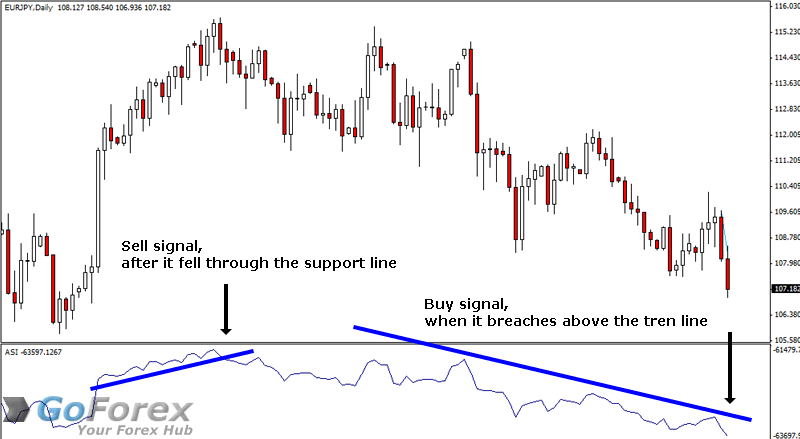Accumulative Swing Index And The McClellan Oscillator
Post on: 7 Апрель, 2015 No Comment

The accumulation swing index (ASI) is a variation of Welles Wilder’s swing index. It plots a running total of the swing index value of each bar. The swing index is a value from 0 to 100 for an up bar and 0 to -100 for a down bar. The swing index is calculated by using the current bar’s open, high, low and close, as well as the previous bar’s open and close. The swing index is a popular tool in the futures market. (To learn more about trading futures, see Are You Ready To Trade Futures ? )
The accumulative swing index is used to gain a better long-term picture than using the plain swing index, which uses data from only two bars. If the long-term trend is up, the accumulative swing index is a positive value. Conversely, if the long-term trend is down, the accumulative swing index is a negative value. If the long-term trend is sideways (non-trending), the accumulative swing index fluctuates between positive and negative values. This indicator is used to analyze futures but can be applied to stocks as well.
ASI will give the technician numerical price swings that are value quantified, and it will show short-term trend turnarounds. Metastock explains it best:
A breakout is indicated when the accumulative swing index exceeds its value on the day when a previous significant high swing point was made. A downside breakout is indicated when the value of the accumulative swing index drops below its value on a day when a previous significant low swing point was made.
You can confirm trendline breakouts by comparing trendlines on the ASI to trendlines on the price chart. A false breakout is indicated when a trendline drawn on the price chart is penetrated, but a similar trendline drawn on the accumulative swing index is not. (To learn more about trendlines, see The Utility Of Trendlines )
This 2002 chart of Apple (Nasdaq:AAPL ) shows a couple of trendlines which confirm the short-term trend witnessed in May, and the horizontal pattern that has developed over the summer and early fall. The ASI in this chart, indicates no buy signal. yet, each and every day, the sellers of this stock find buyers.
This indicator can be used on occasion to confirm a belief in a trend swing.
McClellan Oscillator
The McClellan Oscillator. developed by Sherman and Marian McClellan, in the late 1960s, calculates the difference between two exponential moving averages by using the advances and declines from the same day period.
Now, this may be the most important part to understand: the two moving averages are always 19 and 39 period exponential moving averages (EMAs), and represent 10 and 5% trend values, respectively. Professional charting software programs, like Tradestation and others, use 19 and 39-day EMAs as the default periods, but many chartists will experiment with other periods in an attempt to fine tune their studies. If you do use the 19/39 model, the McClellan is a good short-term indicator, anticipating positive and negative changes in the advance/decline stats for better market timing. (To learn how to calculate a metric that improves on simple variance, see Exploring The Exponentially Weighted Moving Average )
Similar to the moving average convergence divergence. the McClellan Oscillator is a momentum indicator. When the short-term average moves above the long-term average, a positive value is recorded. As with most oscillators. the McClellan Oscillator shows an overbought issue when the indicator measures in the positive 70 to 100 range, and it shows an oversold issue in the negative 70 to 100 range. Buy signals are indicated when the oscillator advances from oversold levels to positive levels, and, conversely, sell signals are indicated by declines from overbought to negative territory. A rising trendline of troughs and peaks would be a positive sign to the trader while falling tops and bottoms would bring out the sellers. (For related reading, see Simple Moving Averages Make Trends Stand Out )














